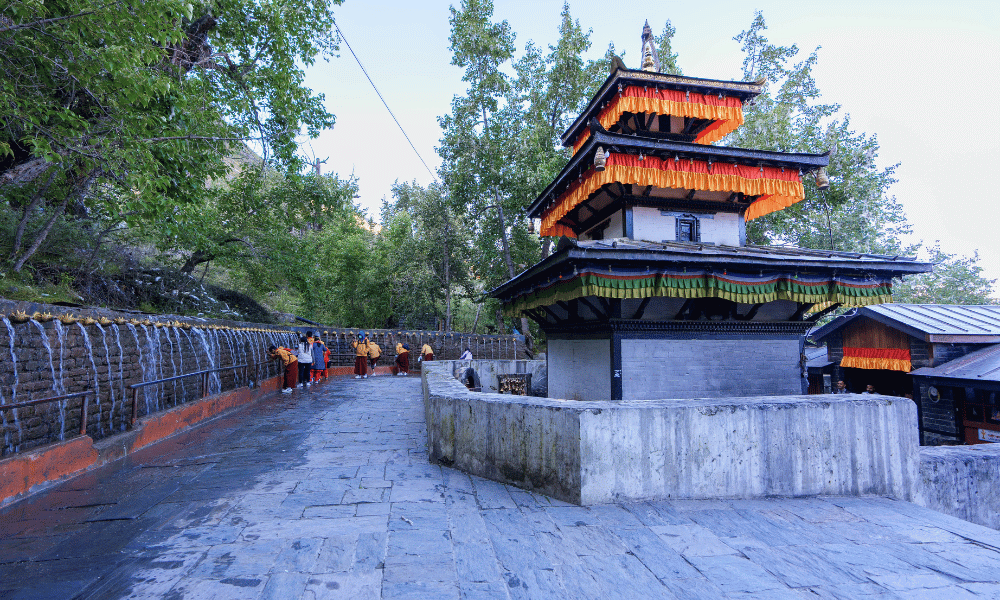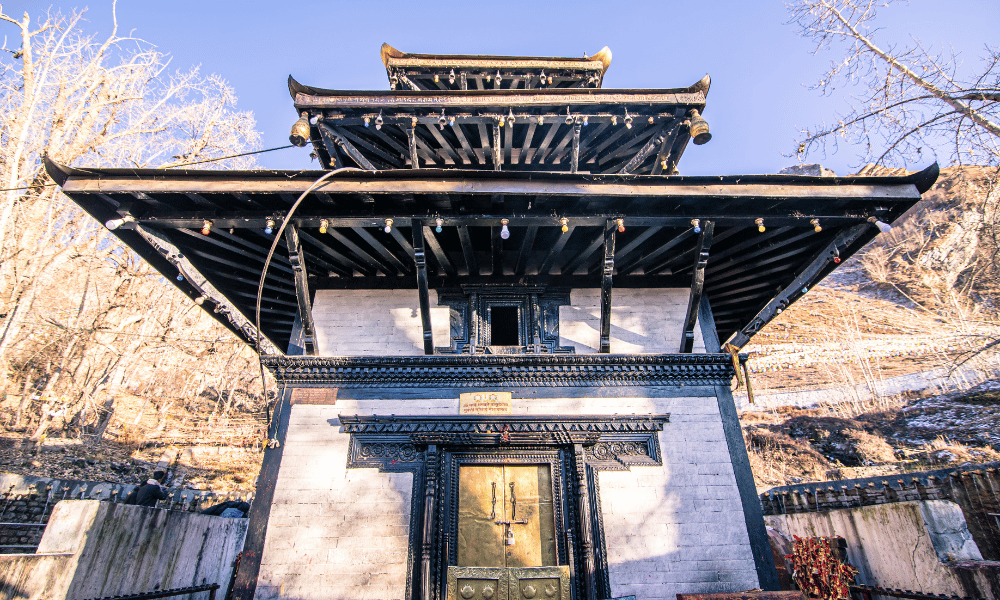Located in the heart of the Mustang district, surrounded by gigantic mountains and rough terrain, Muktinath Temple, also known as Chumig Gyatsa, is a highly revered pilgrimage site in Nepal. Dedicated to Lord Vishnu, this temple is a revered sight for not only Hindus but also for Buddhists, as they consider the deity to be the Avalokitesvara and is considered one of the 24 Buddhist trantric places in the world. This coexistence has made the Muktinath Temple one of the prime examples of religious harmony in Nepal.
Many pilgrims and travellers alike visit this temple either to get blessings from Lord Vishnu and the removal of their sins or to experience the untamed beauty of this region. From the adventure along the way to reach this sacred site to the awe striking natural beauty of the surroundings of the temple and the spiritual energy of the temple, all are the major features of this sacred site, which attracts thousands of visitors and pilgrims each year.
Our goal in this photo blog of Muktinath Temple is to convey the spiritual ambience and breathtaking scenery of Muktinath while also capturing the essence of its calm beauty and cultural significance. We intend to give visitors and pilgrims a visual tour of the major attractions around the Muktinath area through our lens through this blog. Whether you’re a professional traveller, a photography enthusiast, a pilgrim, or simply curious about this remarkable site, this photo blog invites you to embark on this captivating exploration of faith, beauty, and community.
Learn More: Muktinath Temple
Table Of Content
- Muktinath Temple Facts
- Photos of Muktinath Temple
- Muktinath Entrance Gate
- Steps towards Muktinath Temple
- Muktinath Helipad
- Vishnu Paduka Temple
- Samba Gumba
- Muktinath Temple Courtyard
- Muktinath Temple
- Muktinath Temple in Winter
- Yatrung Festival
- Mukti Dhara (108 Water Spouts)
- Mukti Kunda (Sacred Ponds)
- Mukteshwor Mahadev Temple
- Sangye Buddha Statue
- Jwala Mai Temple
- Mharme Lha Khang Gompa
- Saligram
- Conclusion
- Frequently Asked Questions (FAQs)
Muktinath Temple Facts
Here are some facts related to Mutinath Temple:
|
Site |
Muktinath Temple |
|
Location |
Muktinath, Mustang |
|
Affiliation |
|
|
Deity |
|
|
Major Attractions |
|
|
Major Celebrations |
|
|
Architecture Style |
Pagoda Style |
|
Opening Hours |
05:00 AM - 08:30 PM |
|
Entry Fee |
No Entry Fee |
|
Permit Required |
ACAP (Annapurna Conservation Area Project) Permit |
Photos of Muktinath Temple
Here are some photographs of the Muktinath Temple and it’s surrounding attractions. These attractions are the centrepiece of the Muktinath area that one must visit during their time here. Some of the major attractions of the Muktinath area with their visuals for your reference are given below:
Muktinath Entrance Gate
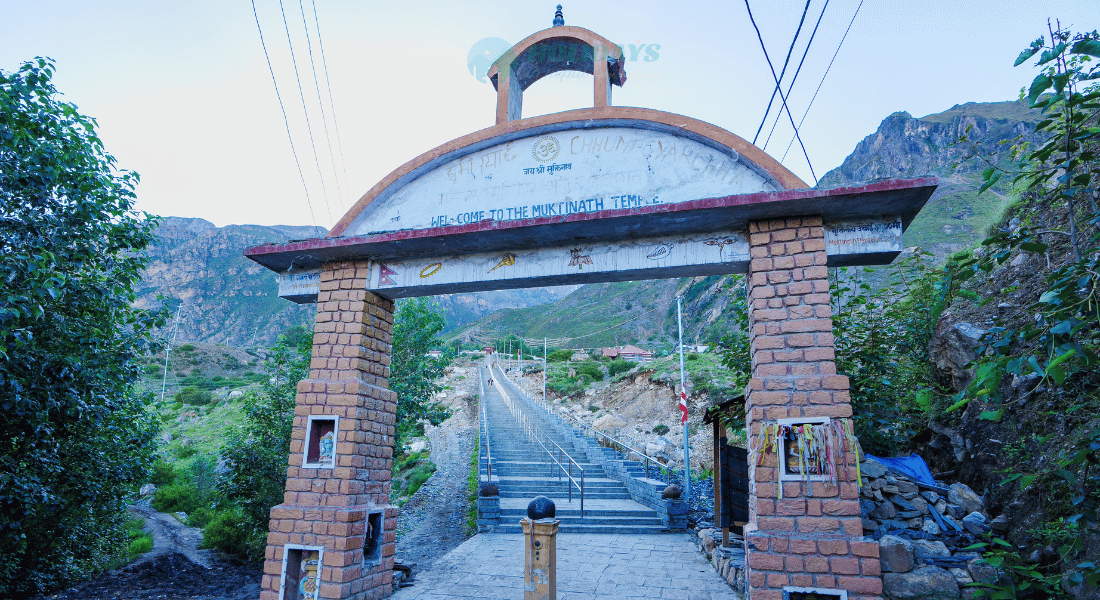
The entry gate of the Muktinath area is around 17 feet tall, made up of concrete and bricks. On the entry gate there are icons of Lord Vishnu as well as of Gautam Buddha on either side. There is also a saligram in front of the gate as well. From the entry gate, there are a few hundred steps towards the Muktinath temple.
Steps towards Muktinath Temple
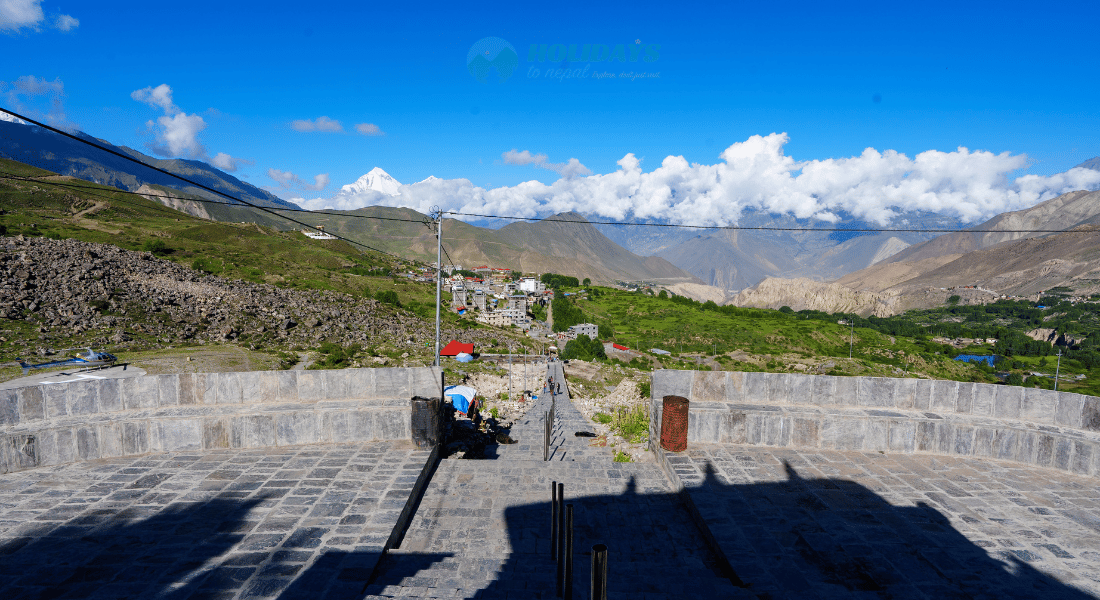
From the entrance gate, one has to walk around 300 steps towards the Muktinath temple. One can see many sadhus wearing orange robes along the way, and on the right hand side there is also a helipad for travellers visiting Muktinath Temple by Helicopter. If visitors cannot walk all these steps, then there is also the option to climb steps on a horseback with some additional charge.
Muktinath Helipad
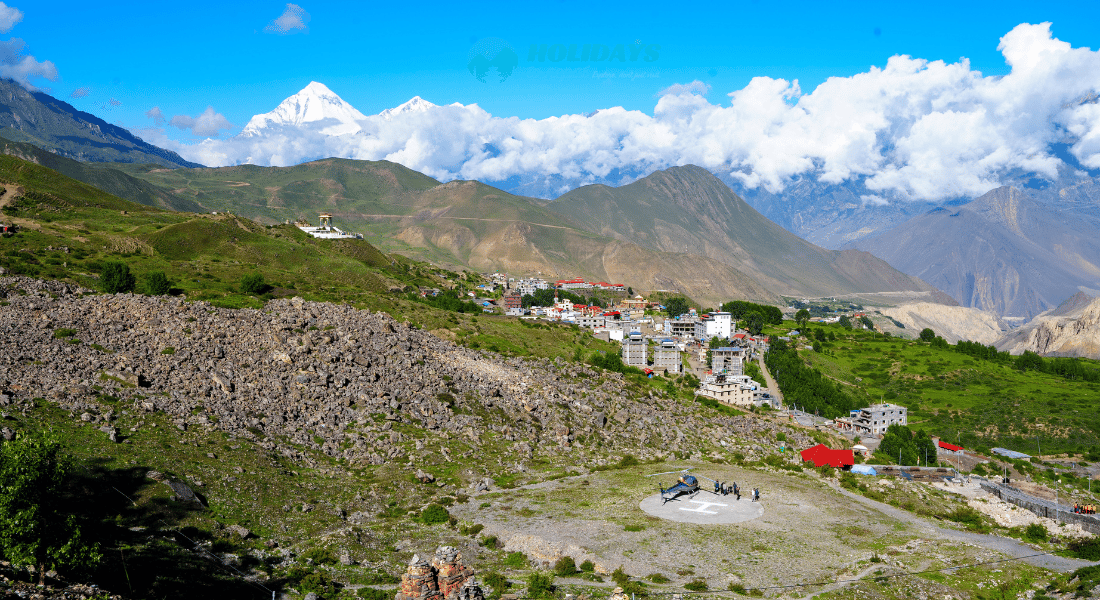
A few steps from the entrance gate, on the right hand side, there is a helipad for travellers visiting Muktinath Temple by helicopter. Visitors can take a helicopter ride from Kathmandu Airport, which takes about 1 and a half hours, or from the Pokhara Airport, which takes about 45 minutes to reach the temple grounds, depending on their comfort.
Related Package: Muktinath Yatra by Helicopter
Vishnu Paduka Temple
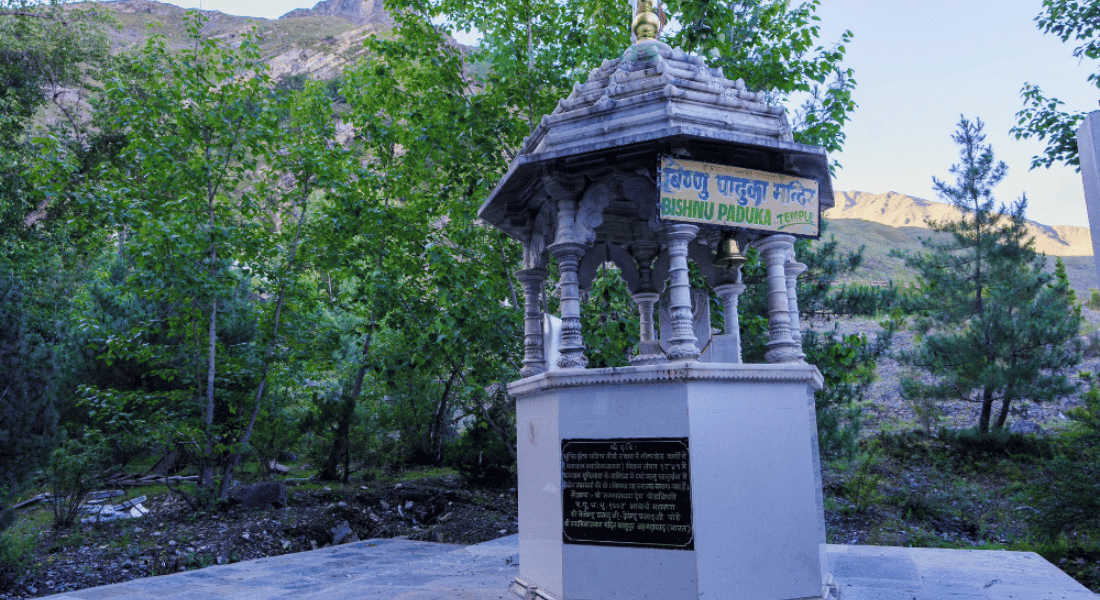
Vishnu Paduka Mandir, or the temple of Lord Vishnus lotus feet, is a small shrine on the right side along the way to the Muktinath Temple. This small shrine made up of white marble contains an imprint of Lord Vishnus feet on a lotus base as well as an image of Nilkant Varni (Swami Narayan), a child yogi who is depicted standing on one leg for severe meditation.
Samba Gumba
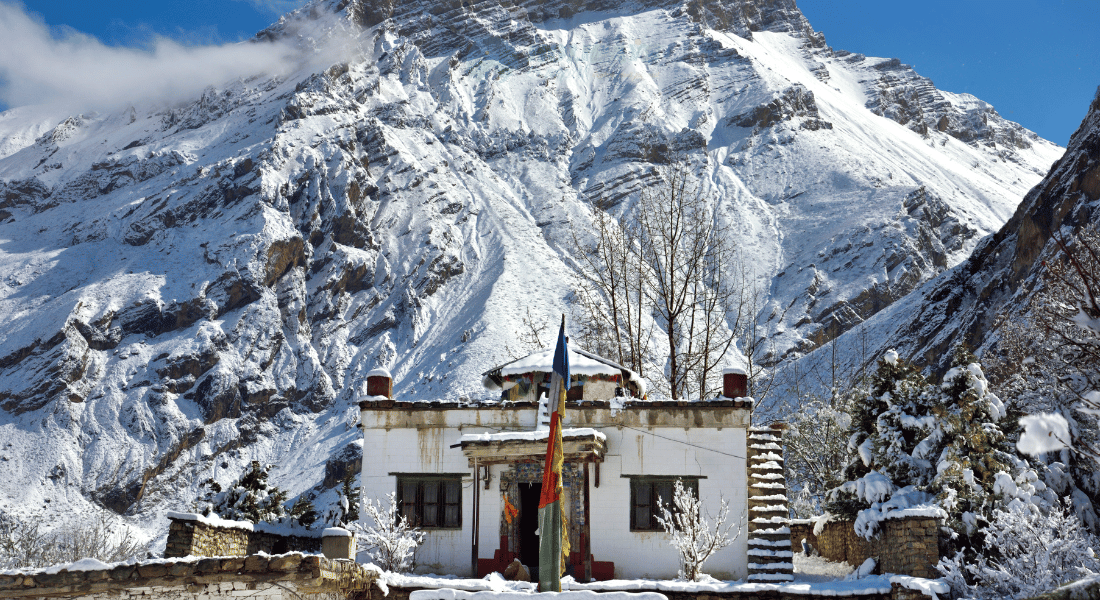
Samba Gumba is located to the left after entering through the main entrance gate of Muktinath Temple, which is indicated by a sign board. Gompa Samba, which means "new monastery," is believed to have been founded by Syandol Lama, who came from Tibet. Originally this monastery was a hostel for lamas that later collapsed, and people of Khinga and Jharkot jointly reconstructed it as the new monastary. The main deities of this monastery are Sakyamuni Buddha in the centre with Avalokitesvara on his right and Guru Rinpoche on the left.
Muktinath Temple Courtyard
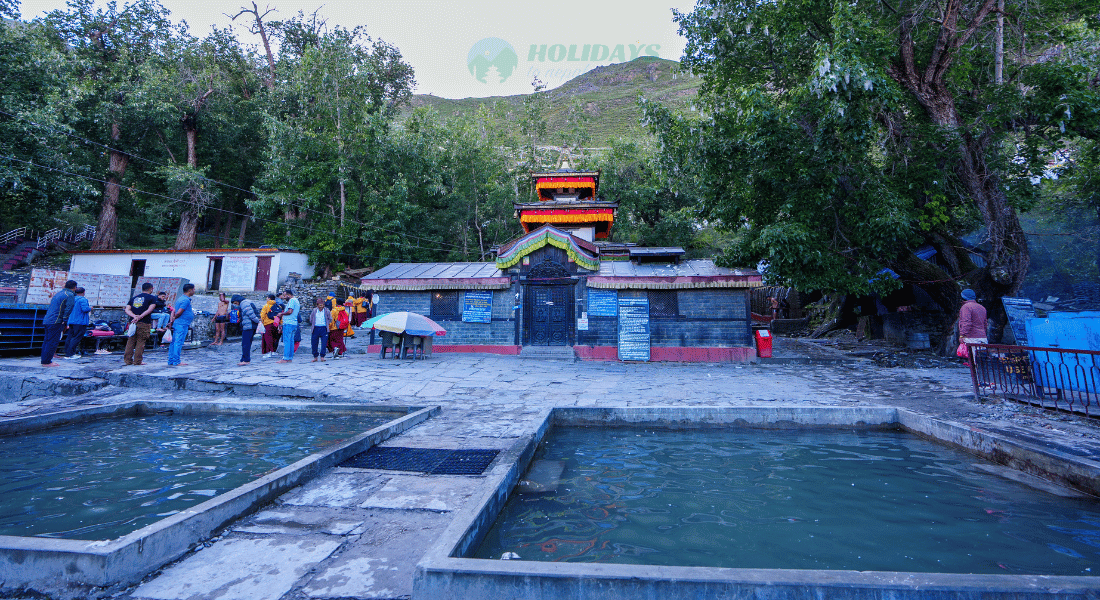
The Muktinath temple courtyard is comprised of several elements that enhance the beauty of the temple. The outer courtyard is comprised of two Mukti kundas right in front of the temple and 108 bullfaced Mukti dharas around the temple, forming a semicircle each gaped a foot apart.
Muktinath Temple
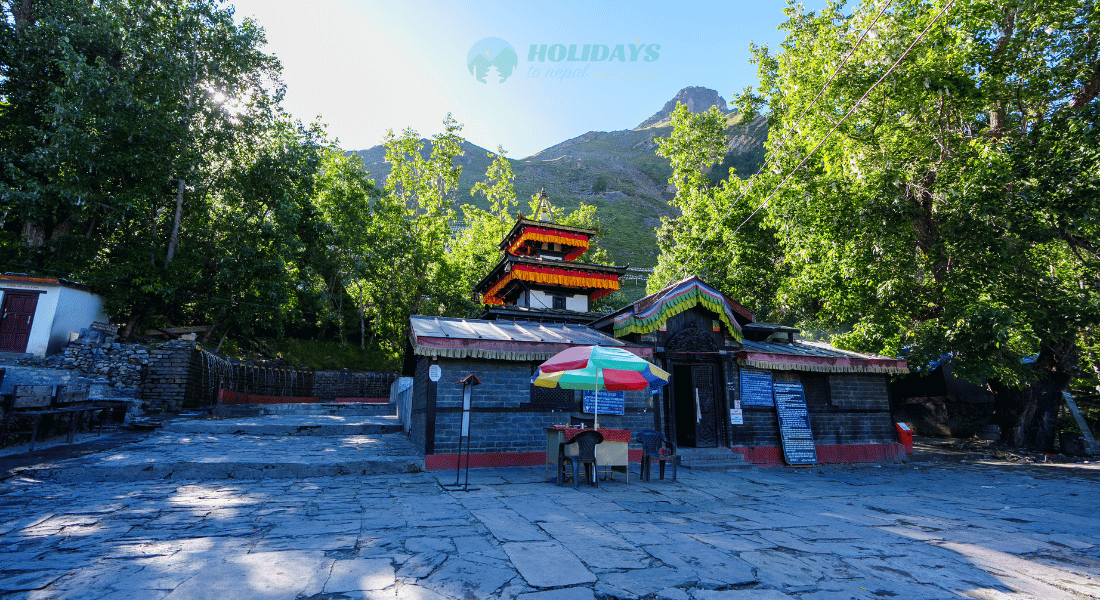
The Muktinath Temple, located in Mustang District, is a highly revered pilgrimage site for Hindus as well as Buddhists. For Hindus, the temple is dedicated to Lord Vishnu, whereas for Buddhists, the deity inside the main temple is Avalokitesvara, who is referred to as the lord of the world. The 3 story temple architecture is made based of traditional pagoda architecture in a small area. The inner sanctum holds the idol of Lord Vishnu along with other deities such as Saraswoti and Lakshmi.
Muktinath Temple in Winter
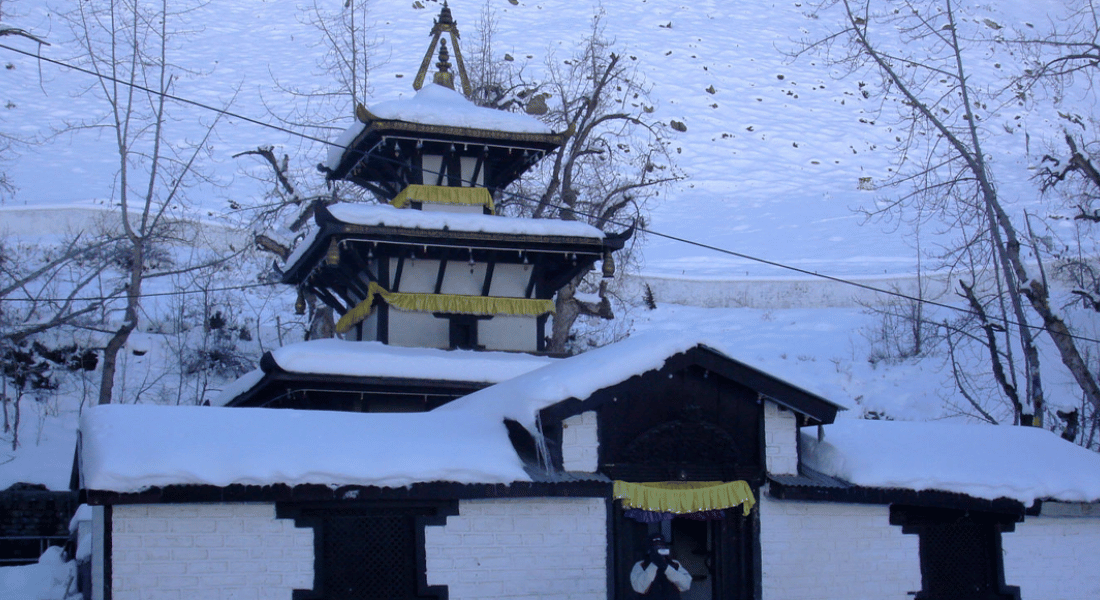
During the winter season, the Muktinath area experiences snowfall, making it a wonderful sight to see. The temperature ranges from 0°C to 5°C during the day to -10°C to -20°C during the night. If one is visiting Muktinath Temple during the winter seasons, it is recommended to carry clothes that can withstand such a harsh climate.
Yatrung Festival

Yartung festival is one of the biggest festivals celebrated in the Mustang region. It celebrated yearly during the month of August on the full moon. It is a multiday celebration featuring the famous horse races along with cultural programmes from the Thakali and Tibetan people. It is celebrated as a farewell to the summer months that have brought prosperity to their lands.
Mukti Dhara (108 Water Spouts)
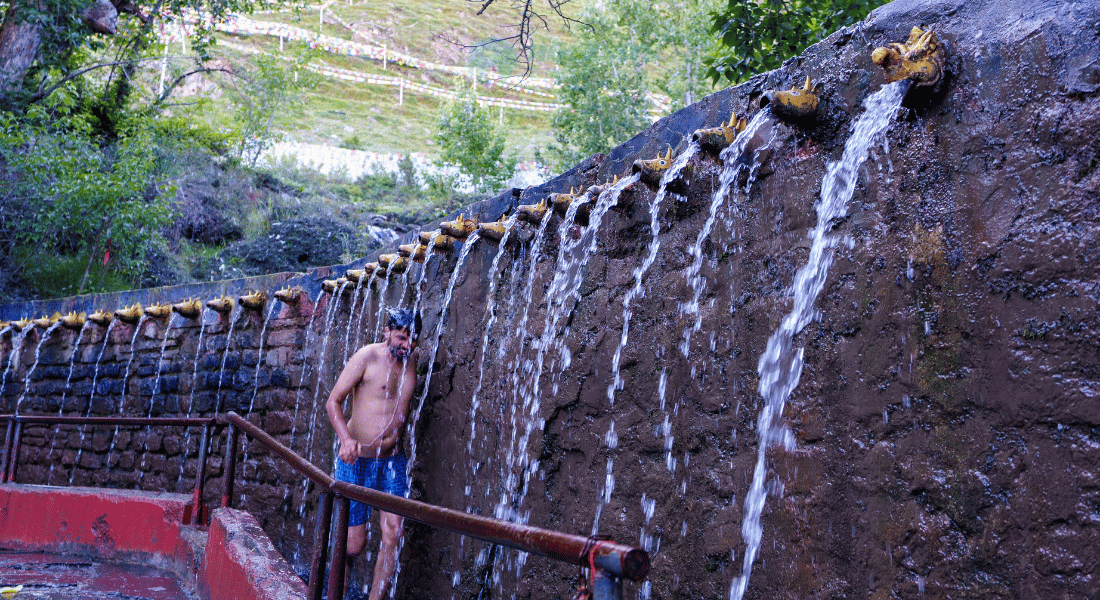
The Mukti Dhara, all shaped like a bull’s head, is one of the major elements of Muktinath Temple. The water coming out of the 108 water spouts signifies the water from the 108 divya desams (Lord Vishnus Temple mentioned in the work of Alvars, a Tamil poet saint). It is believed that if one bathes in all 108 water Mukti dhara, then their sins will be washed away.
Mukti Kunda (Sacred Ponds)
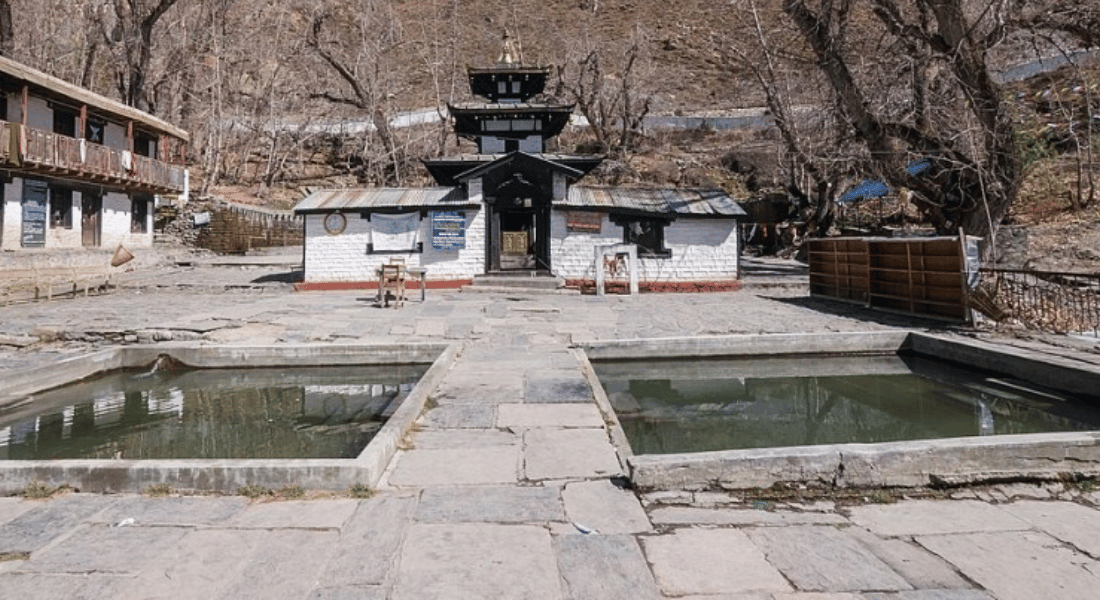
Situated infront of the Muktinath temple are two Kundas (water ponds) named after Goddess Lakshmi and Saraswoti, collectively called Mukti Kundas. It is believed that if one takes a dip in the icy water of these ponds, then their sins and negative karma will get rinsed away.
Mukteshwor Mahadev Temple
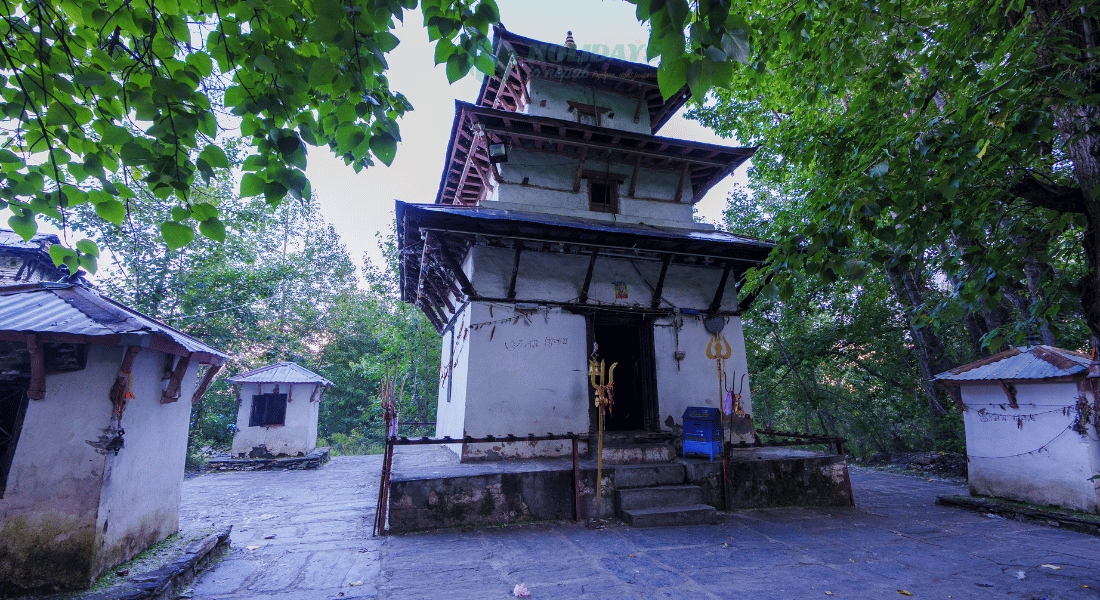
The Shiva temple lies to the left of the entrance while going towards the main Muktinath temple. The Mukteshwor Mahadev Temple, dedicated to Lord Shiva with goddess Parvati, is surrounded by four small shrines. In a clockwise manner, the temple of Vishnu is on the left, followed by the temple of Lord Rama, the temple of Lord Krishna, and the temple of Ganesha, the son of Shiva and Parvati, on the right. A very small Nandi sits outside the temple, guarding the entrance.
Sangye Buddha Statue
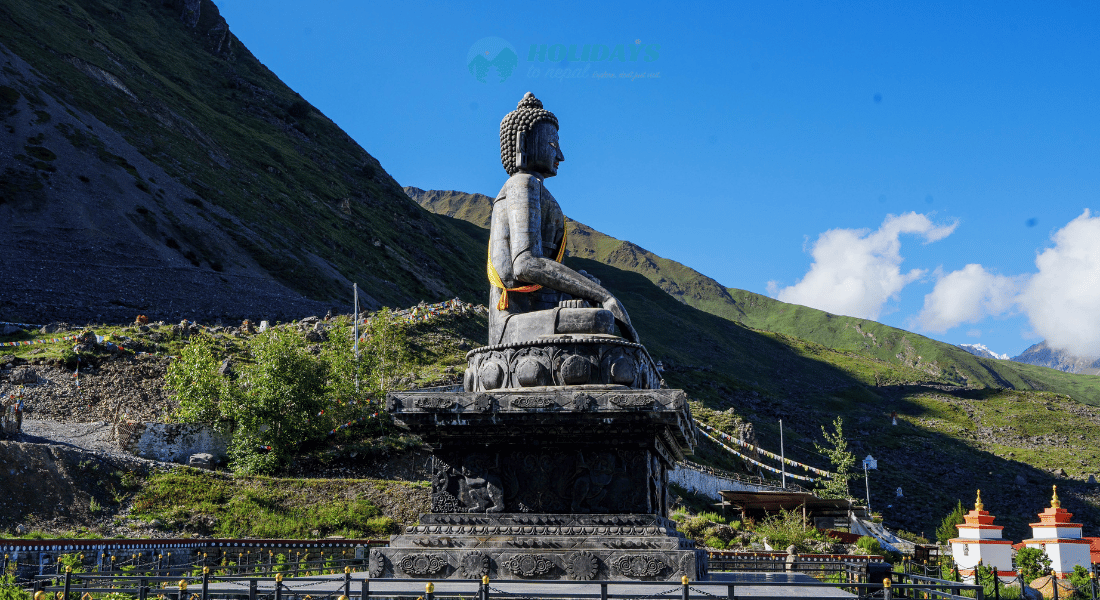
The Sangye Buddha Statue is a 32-foot-tall statue of Shakyamuni Buddha is located east of the Muktinath Temple. Funded by Sonam Lama, a Non Resident Nepalese, the statue was built by Shakya brothers (Dharmaraj Shakya and Uttam Shakya) in Patan and later brought to the Muktinath and installed. The statue weighs around 60,000 kg and is the largest Buddha statue in the Muktinath Area.
Jwala Mai Temple
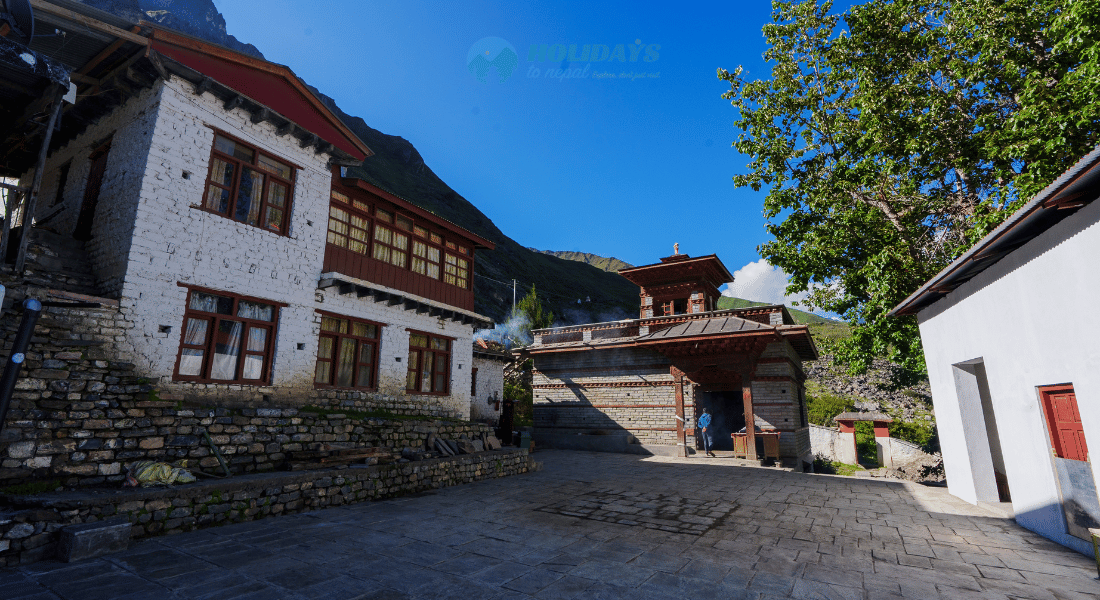
Jwala Mai, which translates to goddess of fire, is the temple of the eternal flame situated to the east of the Muktinath temple. It is built above an underground water stream, and small natural gas jets underneath the temple produce continuously burning flames on top of the water. Inside the temple, the main statues of Manjushri, Avalokitesvara, and Vajrapani are seen, below which (on the floor) is the eternal holy flame. One has to kneel down and look through the grid window in order to see the tiny blue flame.
Mharme Lha Khang Gompa
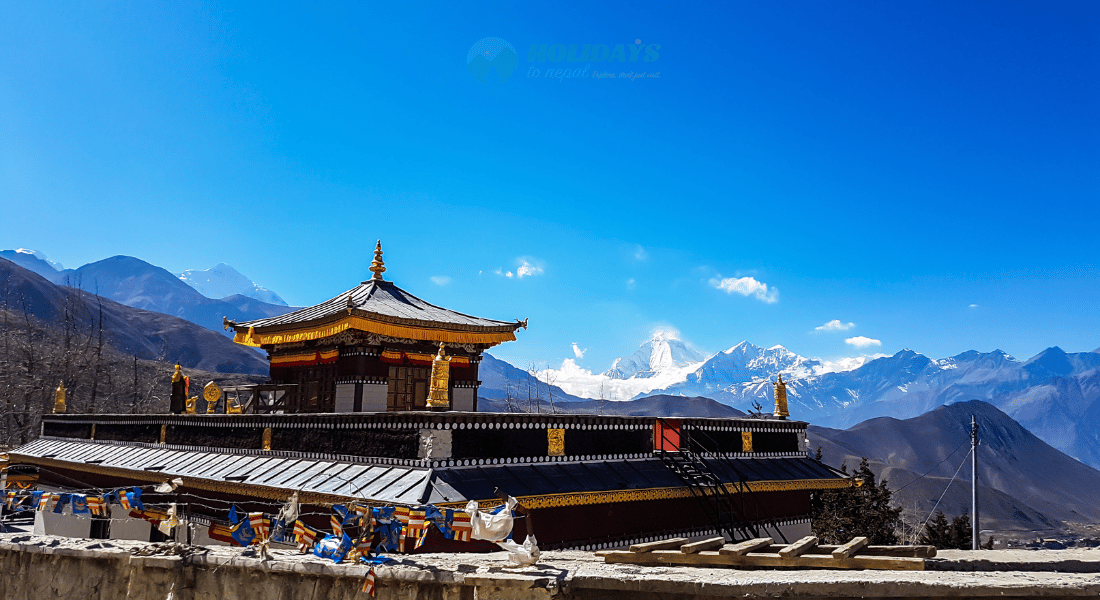
Located north-west of the Muktinath Temple, the Mharme Lha Khang Gompa, which translates as a monastery of thousand holy lamps, contains the statue of famous Guru Rinpoche (Padmasambhava). As this monastery is dedicated to Guru Rinpoche, his huge clay image is placed at the centre of the altar along with the Bon deities: red Dragpo at the right side and blue Senge Dongma at the left side.
Saligram
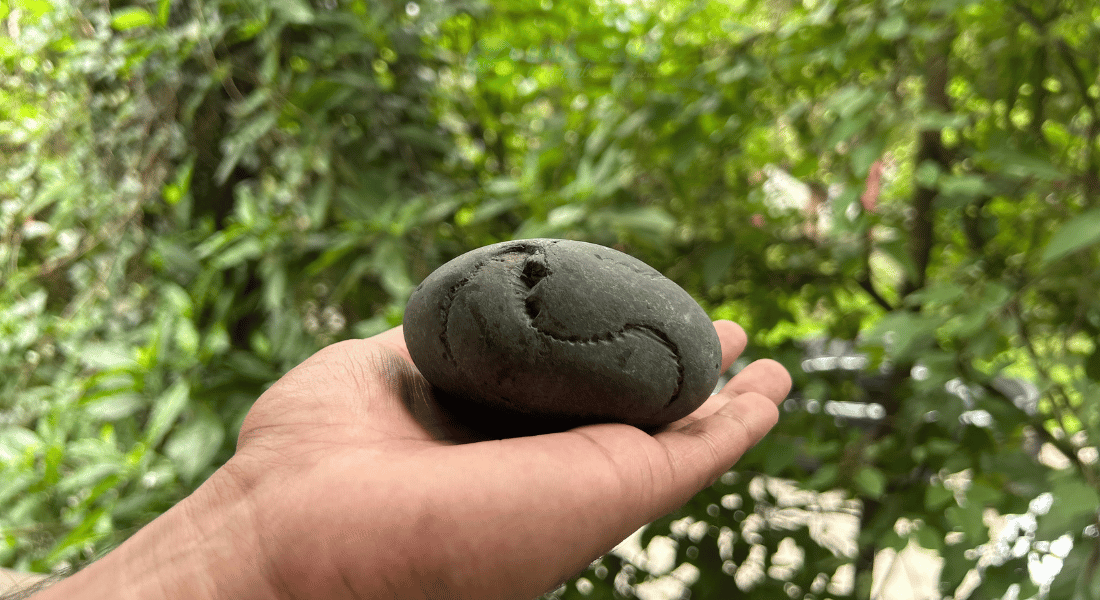
A Saligram or Saligram Sila is a fossilised stone found in the river bed of the Kali Gandaki river. It is written in ancient texts that Lord Vishnu got cursed to become a stone (Saligram) by Tulasi for breaking her chastity by deceiving her. It is revered as a representation of Lord Vishnu, as the Shiva Lingam is revered as Lord Shiva. One can find people selling the saligram all around the Muktinath area.
Conclusion
Muktinath Temple is not just a place of reverence but a unique combination of cultural heritage, natural wonder, and religious harmony. This temple, situated in the rugged tarain of Mustang in the lap of the Himalayas, draws pilgrims and travellers alike, seeking both the peace of the temple and the awe-inspiring landscapes that surround it. The photos in this blog capture the temple's serene atmosphere, along with other major attraction around the Muktinath area, and the quiet devotion of the pilgrims who journey here. Each image reflects the deep sense of peace and sacredness that defines Muktinath, giving a glimpse into the powerful connection between nature, spirituality, and the people who come to experience it.
This photoblog aims to bring the essence of Muktinath to those who have not yet visited this sacred temple or wish to relive their journey. The images show not only the breathtaking beauty of the location but also the spiritual energy that makes it such a meaningful destination. Whether you are drawn to its religious significance or the allure of its striking natural scenery, Muktinath Temple remains a place of deep inspiration, a reminder of not only the religious harmony but also the harmony that exists between nature and spirituality, and a destination that leaves a lasting impression on all who visit.
Frequently Asked Questions (FAQs)
Here are some frequently asked questions about Muktinath Temple:
What is special about Muktinath Temple?
Muktinath as a common place of reverence for people following Hinduism as well as those following Buddhism has made this temple one of the best examples of religious harmony in Nepal.
How to go to Muktinath Temple from Kathmandu?
There are multiple ways to visit Muktinath Temple from Kathmandu. For those who have multiple days to spare, they can drive all the way to Muktinath Temple via Pokhara and Jomsom along the way as major stops. For those with less time, they can take a flight from Kathmandu to Pokhara, then from Pokhara to Jomsom and then drive to Muktinath, or simply take a helicopter ride from Pokhara or directly from Kathmandu for their convenience.
Which is the best time to visit Muktinath Temple?
The best time to visit is in spring (March to May) and autumn (September to November), when the weather is mild and clear.
How many taps are there in Muktinath Temple?
There are all together 108 water spouts (Muktidhara), which are shaped like a bull's head just behind the Muktinath Temple, forming a semicircle, believed to wash away sins.




